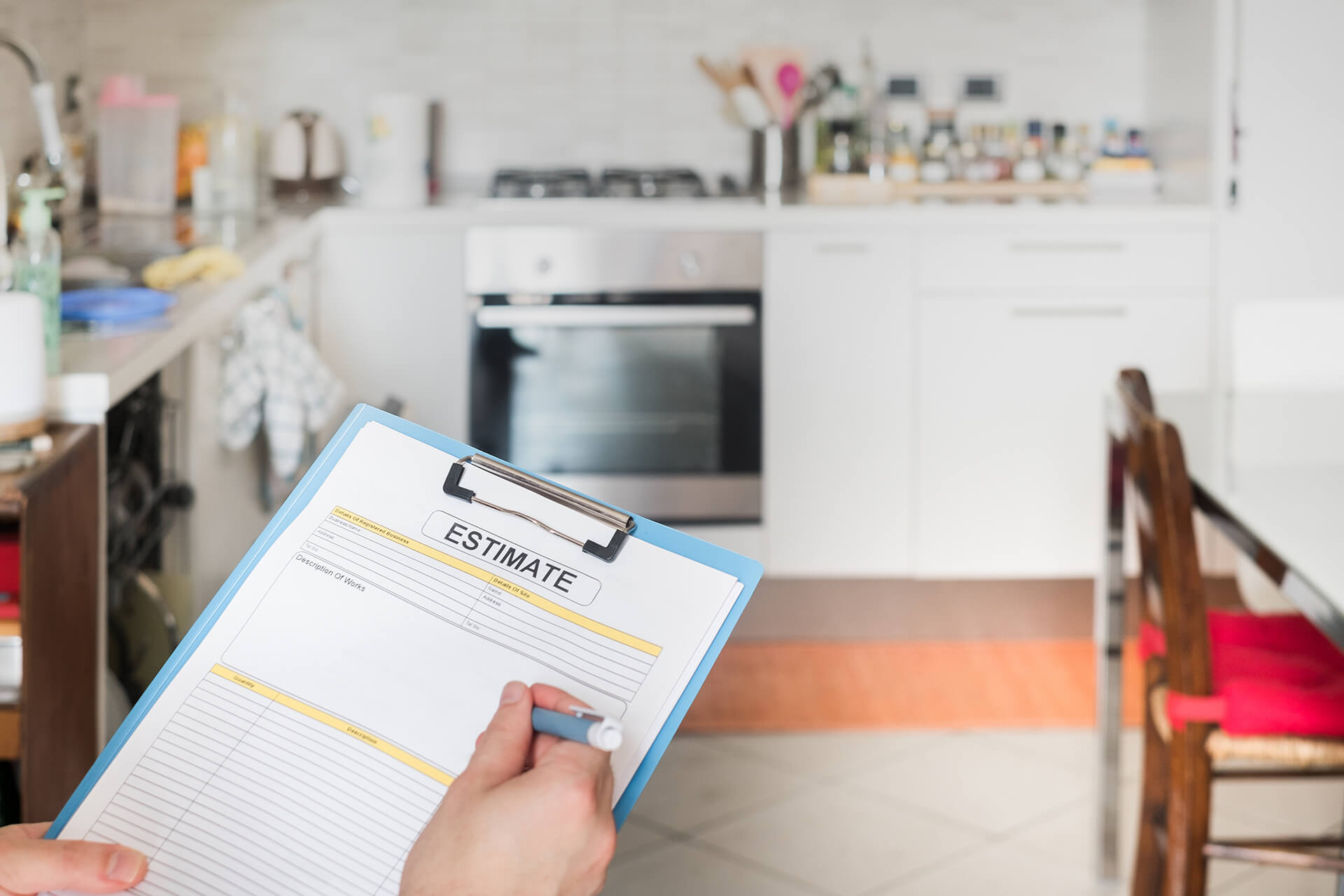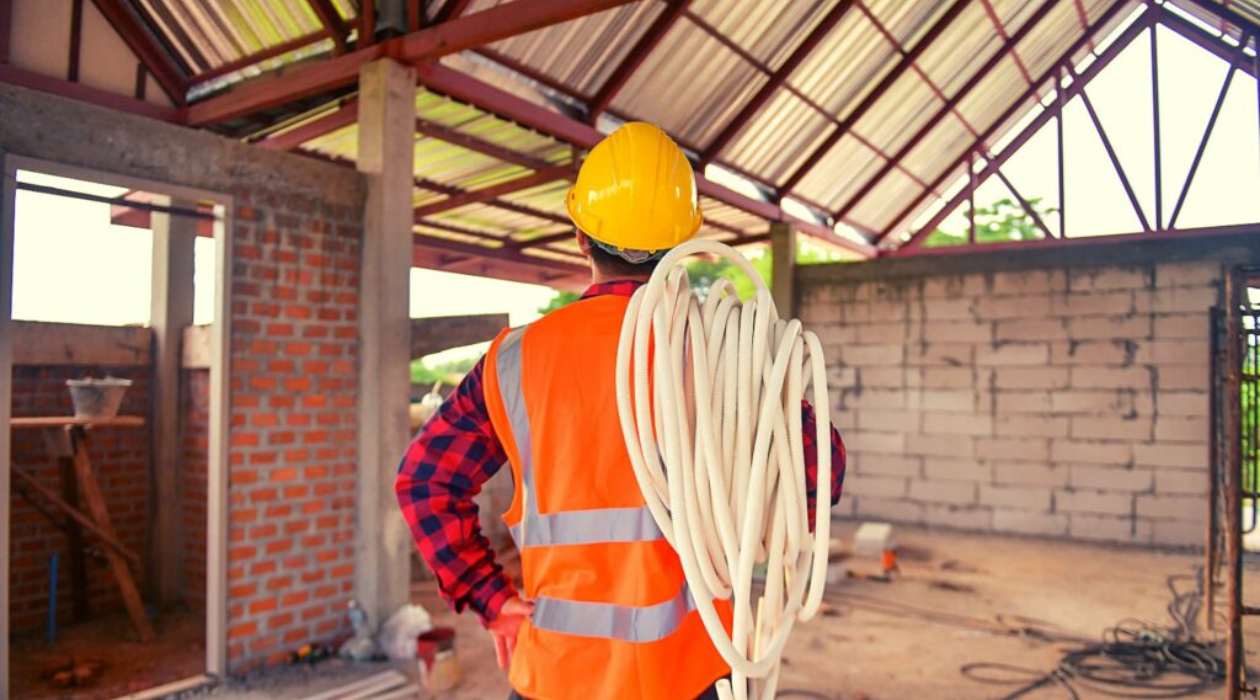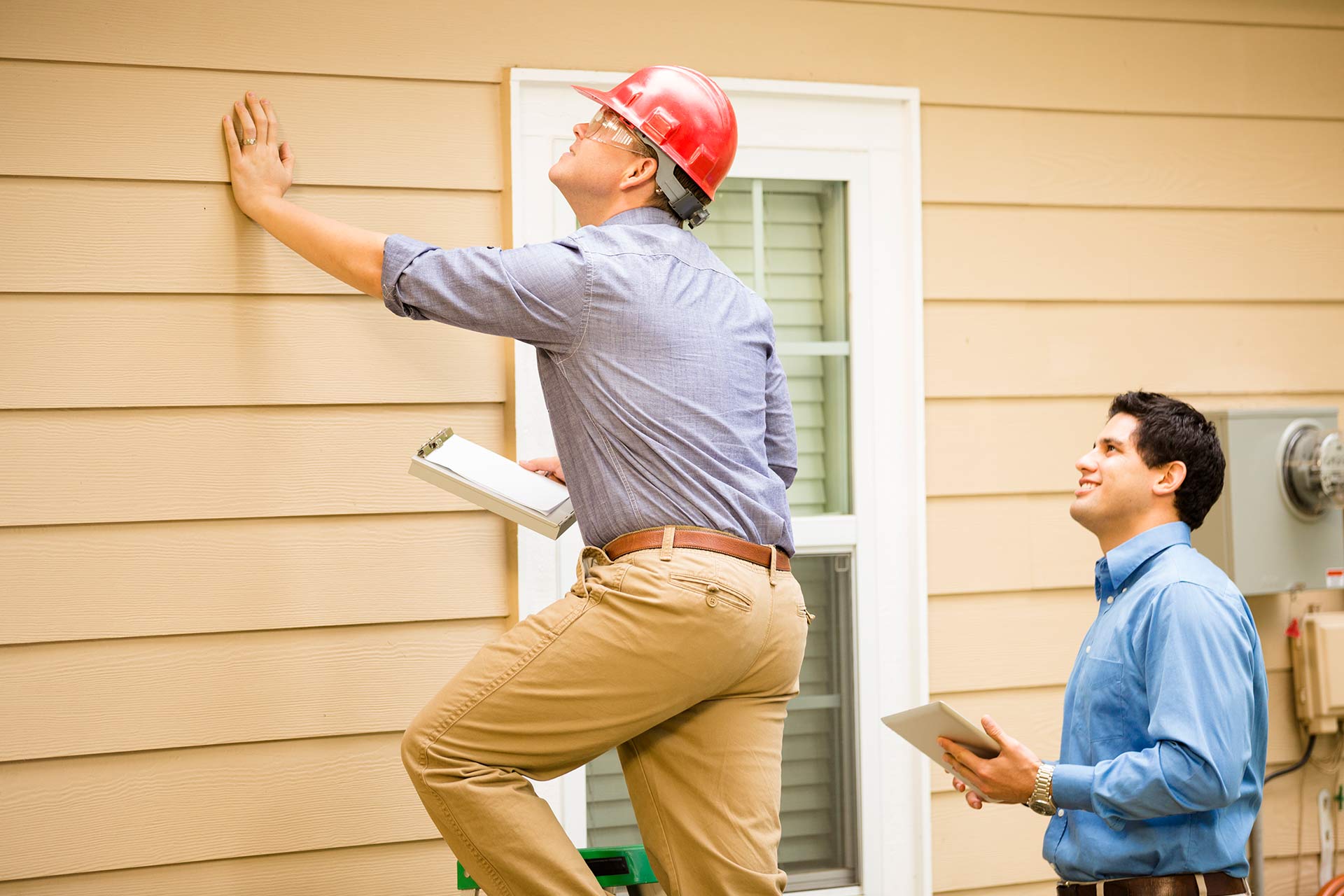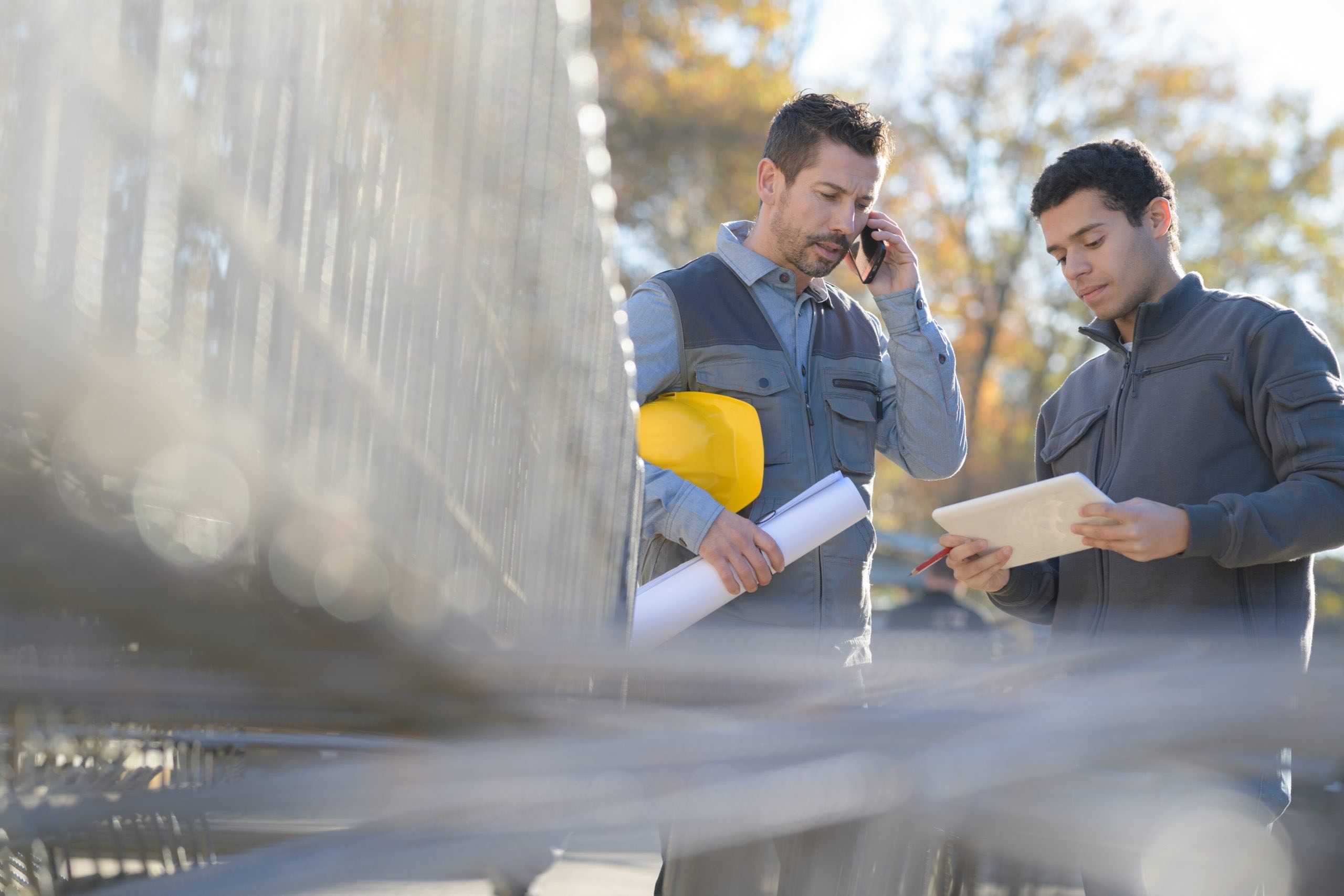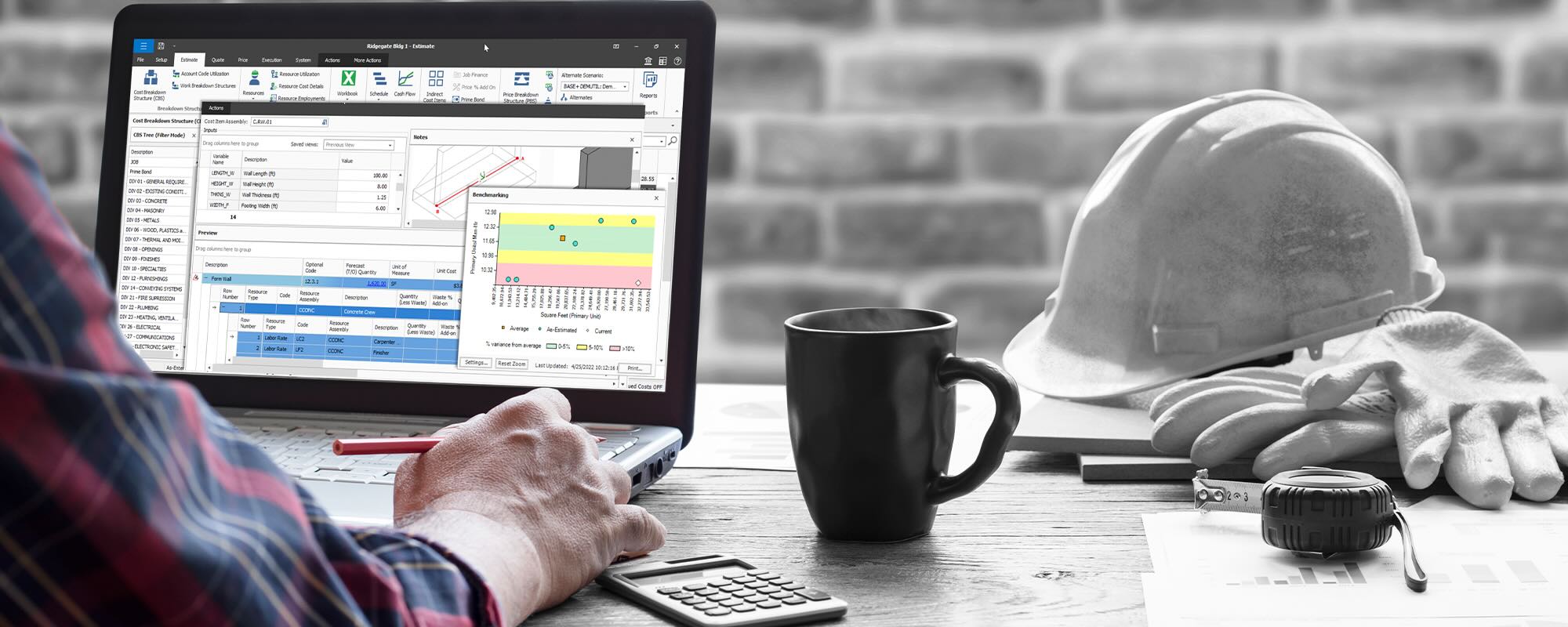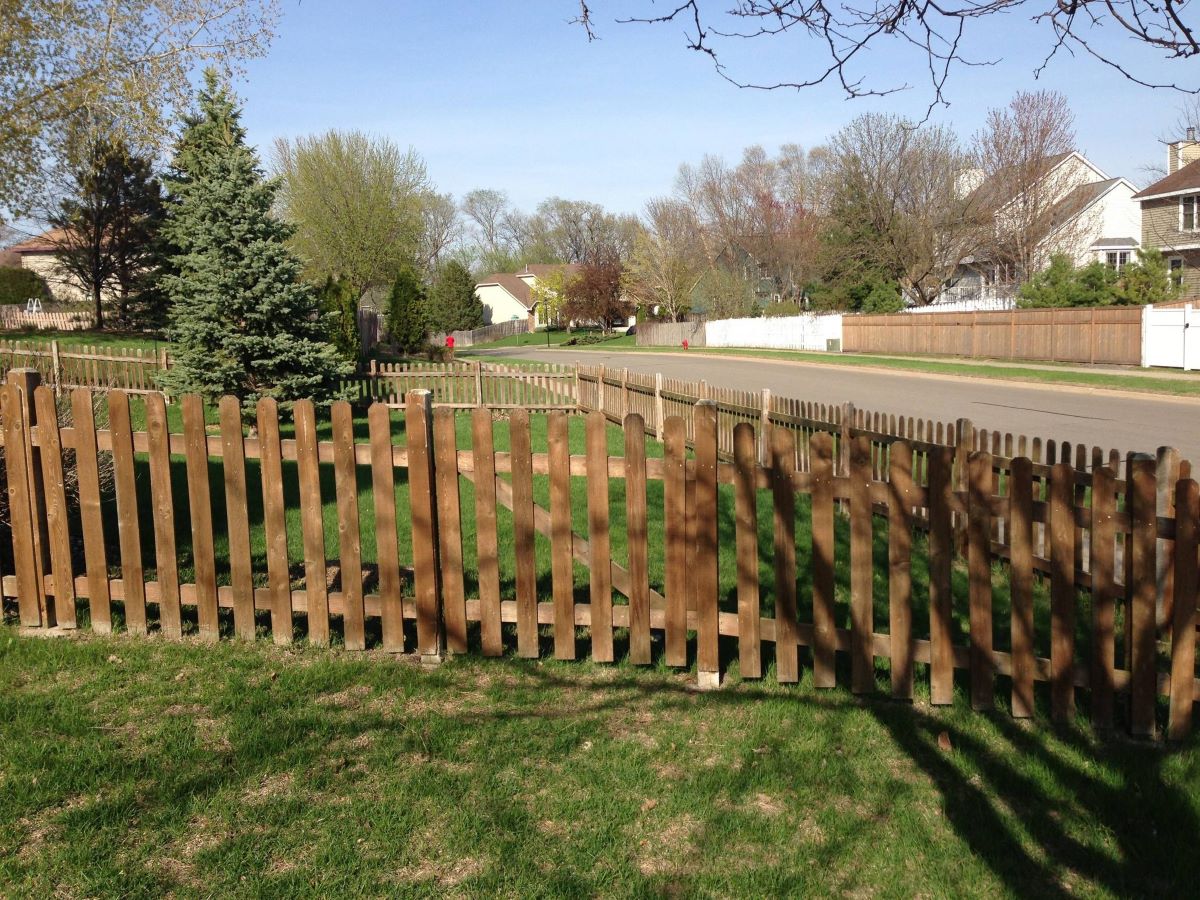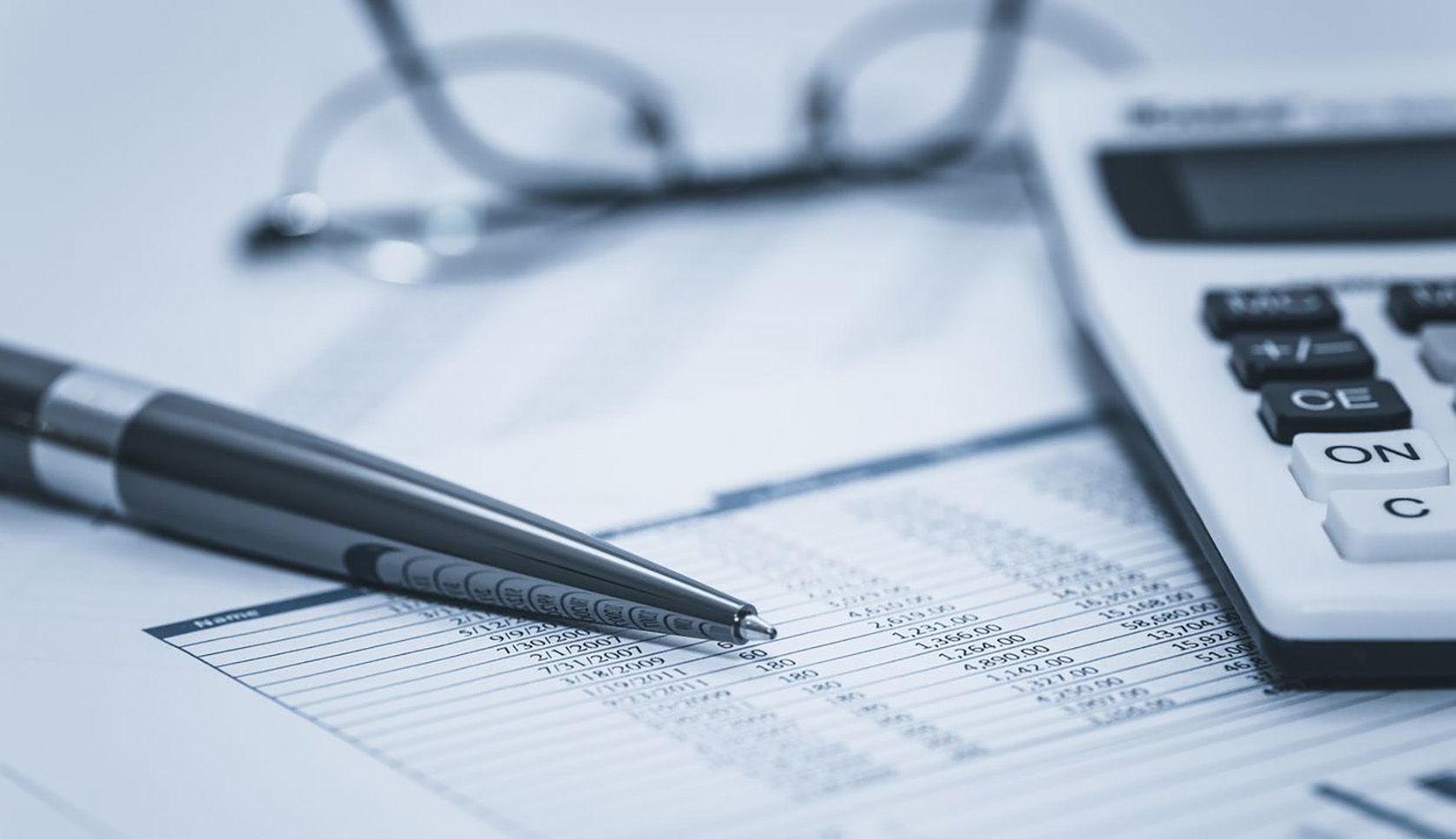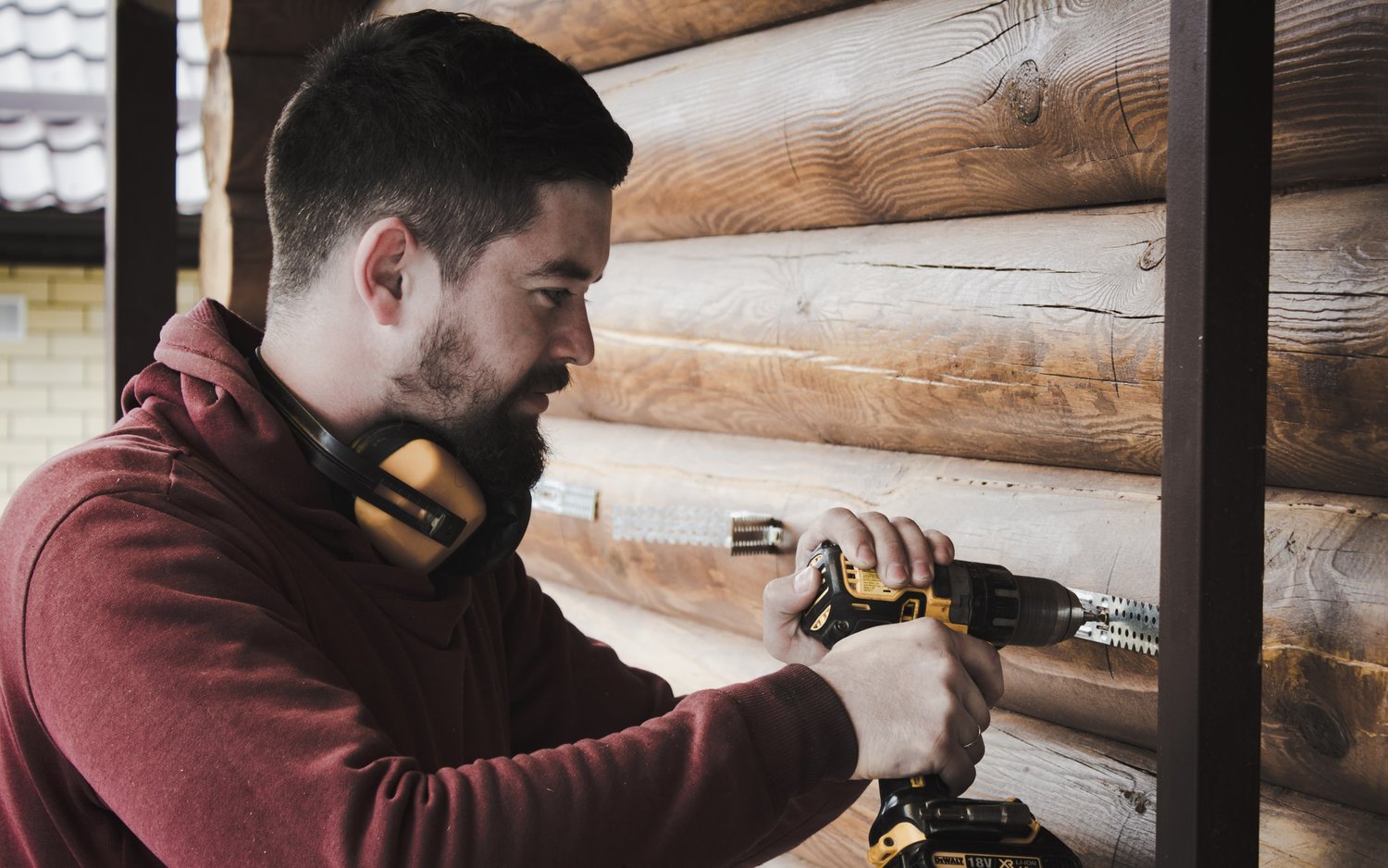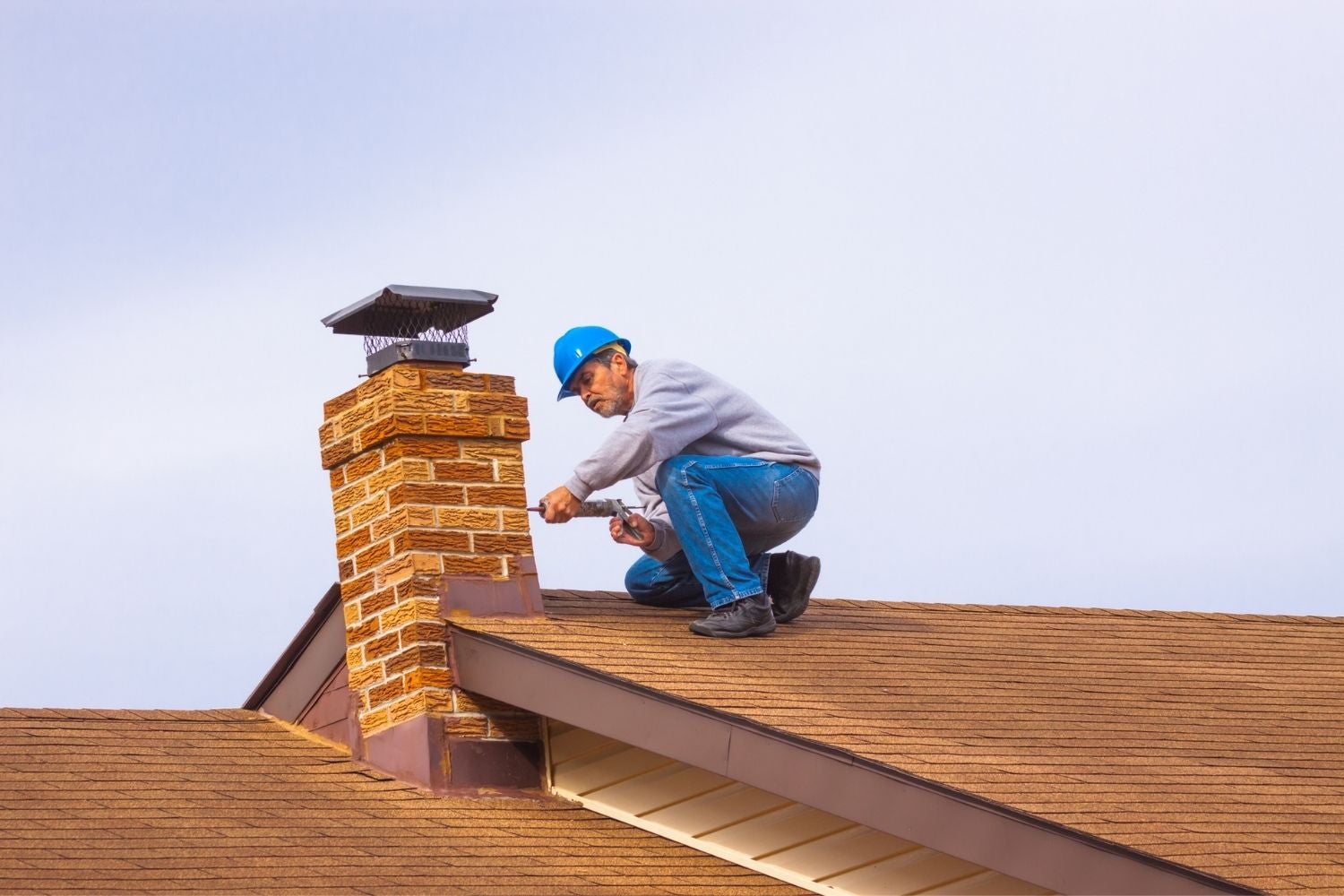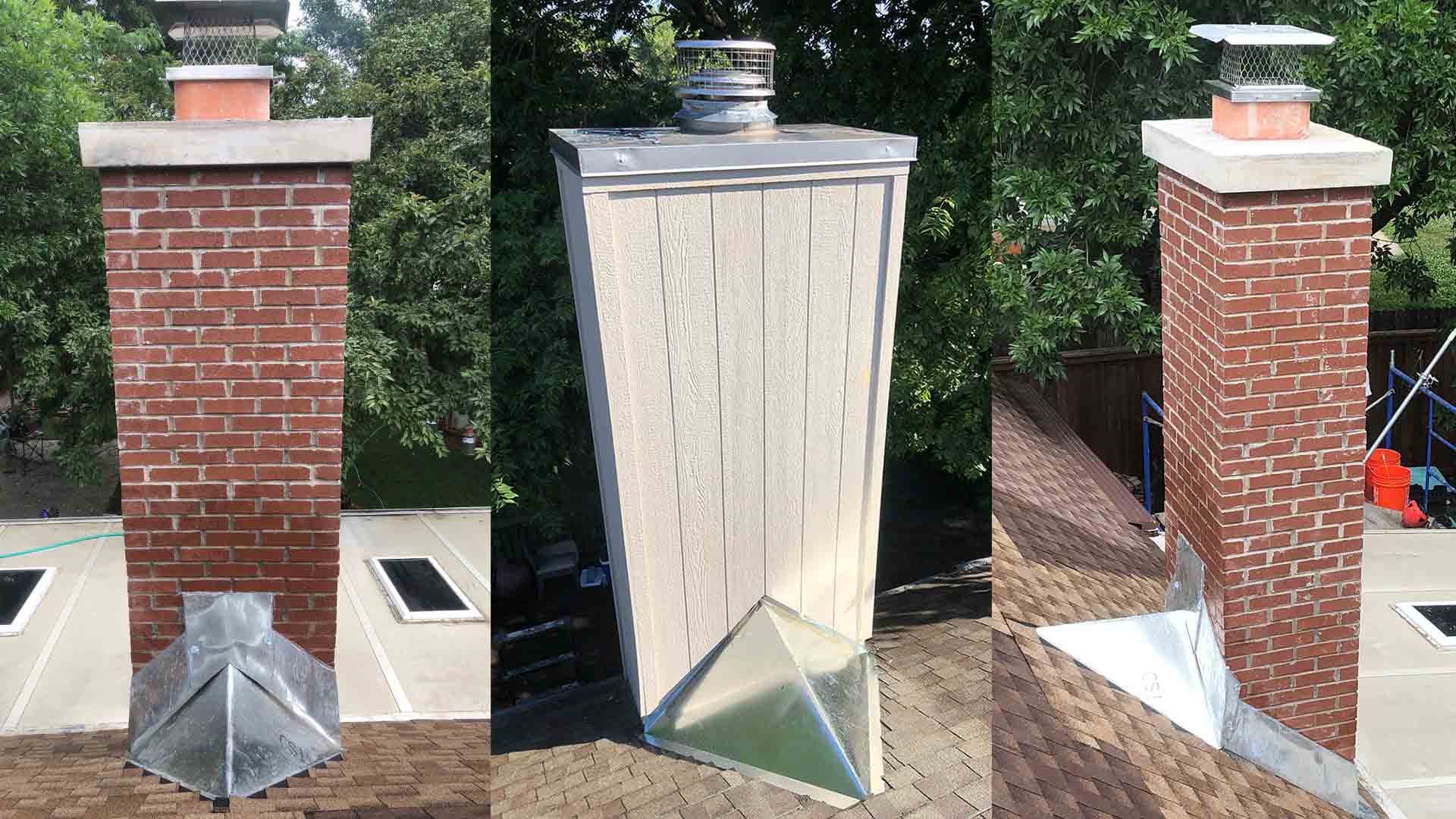Home>Home Maintenance>How To Estimate Repair Cost For Homes
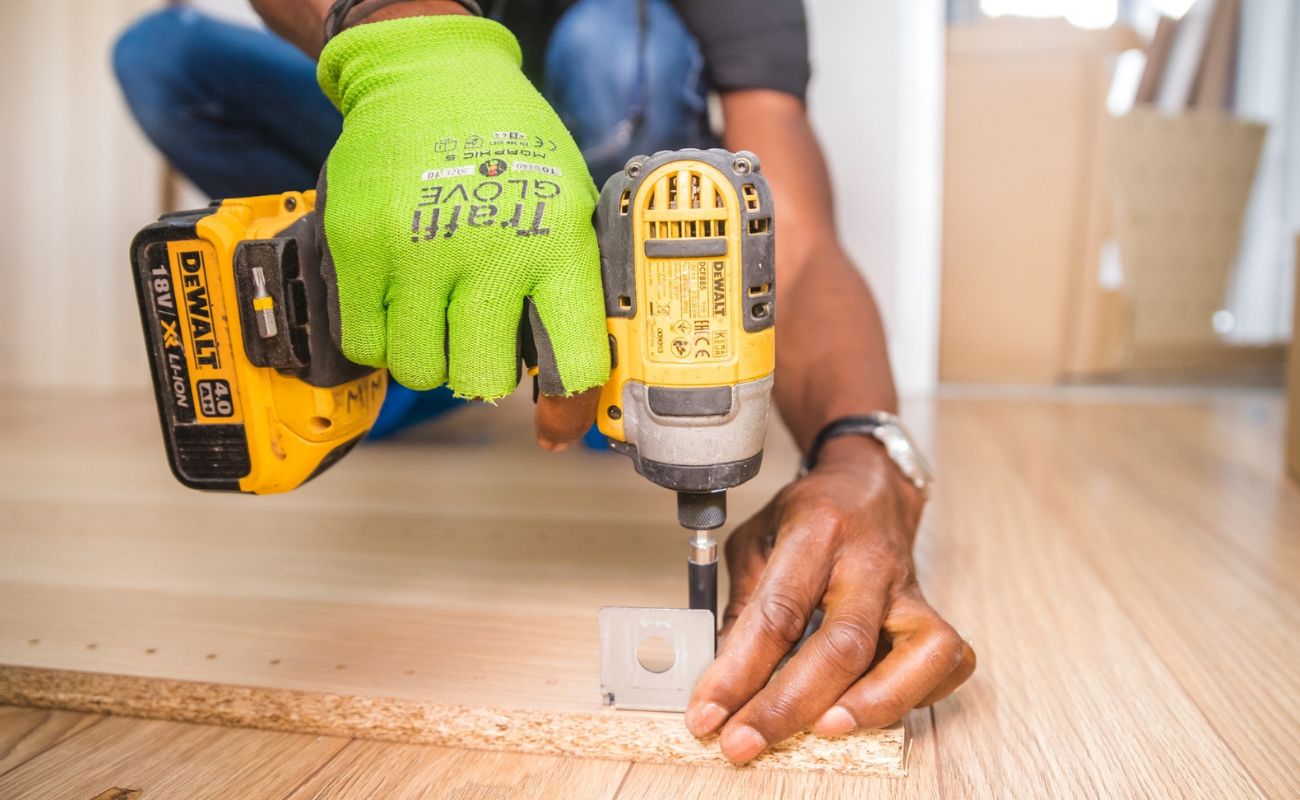

Home Maintenance
How To Estimate Repair Cost For Homes
Modified: March 6, 2024
Learn how to accurately estimate repair costs for your home maintenance needs. Get expert tips and advice to save time and money.
(Many of the links in this article redirect to a specific reviewed product. Your purchase of these products through affiliate links helps to generate commission for Storables.com, at no extra cost. Learn more)
Introduction
When it comes to home maintenance, unexpected repairs can often catch you off guard. Whether it’s a leaky roof, a faulty electrical system, or a cracked foundation, these issues need to be addressed promptly to prevent further damage and ensure the safety and functionality of your home.
One crucial aspect of dealing with home repairs is estimating the cost involved. Having a clear understanding of the repair costs upfront allows you to plan your budget effectively and make informed decisions. In this article, we will guide you through the process of estimating repair costs for your home, helping you avoid any financial surprises along the way.
Before diving into the details, it’s important to note that repair costs can vary significantly depending on various factors, such as the type and extent of damage, the materials needed, and the location. While this article provides general guidelines, it’s always recommended to consult with professionals and obtain multiple quotes for accurate estimates.
Now, let’s explore the steps involved in estimating repair costs for your home:
Key Takeaways:
- 1. Estimate repair costs by assessing damage, researching material prices, and obtaining multiple quotes from qualified contractors. Factor in additional expenses and consider DIY options to create a comprehensive budget.
- 2. Finalize the repair cost estimate by reviewing all gathered information, making necessary adjustments, and creating a flexible budget. Consult with professionals and document everything for transparency and informed decision-making.
Read more: How To Estimate Plumbing Costs
Step 1: Assessing the Extent of Damage
The first step in estimating repair costs for your home is to assess the extent of the damage. Carefully inspect the area in need of repair and identify any visible signs of damage. This can include cracks, water stains, mold growth, or malfunctioning systems.
Take note of the size and severity of the damage. Is it a minor cosmetic issue or a major structural problem? This will help you determine the level of repairs required and give you a starting point for estimating costs.
If you’re unsure about the extent of the damage or need a professional assessment, consider hiring a qualified home inspector or contractor to conduct a thorough evaluation. They will be able to provide expert insights and recommendations, which will be invaluable in estimating repair costs accurately.
Keep in mind that some damages may not be visible to the naked eye, especially in areas such as plumbing or electrical systems. In such cases, it’s crucial to identify any signs of malfunction or inefficiency. For example, if you’re experiencing recurring plumbing issues, it’s likely that there’s an underlying problem that needs to be addressed.
Once you have a clear understanding of the extent of the damage, you can move on to the next step: researching the cost of materials.
Step 2: Researching the Cost of Materials
After assessing the extent of the damage and understanding the repairs required, the next step is to research the cost of materials. The type and quantity of materials needed will play a significant role in estimating the overall repair costs.
Start by creating a detailed list of the materials required for the repair. This can include items such as lumber, flooring, paint, tiles, wiring, plumbing fixtures, or any other materials specific to the repair project. Be specific in your list and try to gather accurate measurements or quantities to ensure an accurate cost estimate.
With your list in hand, begin researching the prices of the materials. Check with local hardware stores, home improvement centers, and online retailers to get an idea of the current market prices. Keep in mind that prices may vary depending on your location and the quality of the materials.
Take note of the prices for each item on your list and calculate the total cost of the materials. It’s essential to consider any additional materials required for the project, such as adhesives, fasteners, or specialty tools. These smaller items can add up, so be thorough in your research.
While researching, also keep an eye out for any sales, promotions, or discounts that may be available. Buying materials during these periods can help you save money and reduce overall repair costs.
Remember, it’s crucial to strike a balance between quality and price. Opting for cheaper materials may save you money upfront, but they may not be as durable or long-lasting. Consider the longevity of the materials and choose ones that will provide the best value in the long run.
Once you have gathered all the necessary information and have a clear understanding of the material costs, you can move on to the next step: finding qualified contractors.
Step 3: Finding Qualified Contractors
When it comes to home repairs, finding qualified and reliable contractors is essential. Hiring skilled professionals ensures that the repairs are done properly and in a timely manner. Additionally, working with reputable contractors can provide you with valuable expertise and guidance throughout the repair process.
There are several methods you can use to find qualified contractors:
1. Ask for recommendations: Seek recommendations from friends, family, and neighbors who have recently completed similar home repairs. Their firsthand experiences can give you valuable insight into the quality of workmanship and customer service provided by specific contractors.
2. Check online directories: Utilize online directories or review websites specifically tailored to home improvement services. These platforms often include ratings, reviews, and testimonials from previous clients, helping you assess the reputation and reliability of contractors.
3. Contact local trade organizations: Reach out to local trade organizations or professional associations in the construction industry. They can provide you with a list of qualified contractors who adhere to industry standards and best practices.
4. Consult with your insurance company: If the repairs are covered by your home insurance policy, contact your insurance company for a list of approved contractors. These contractors are usually vetted by the insurance company and have experience in handling insurance claims.
Once you have a list of potential contractors, conduct further research to narrow down your options. Visit their websites, check their portfolio of previous work, and read client testimonials. Look for evidence of their expertise in the specific repair area you require.
It’s crucial to choose contractors who are licensed, insured, and bonded. Request proof of their credentials and insurance coverage to ensure they are qualified to handle the repairs and protect you from liability in case of accidents or damages.
Lastly, contact the contractors you are considering and schedule consultations. During these meetings, discuss your repair needs, share any information you have gathered, and ask for a preliminary cost estimate. This will help you gauge their professionalism, communication style, and expertise.
By thoroughly researching and choosing qualified contractors, you can move forward with confidence and obtain accurate repair cost estimates for your home.
Step 4: Obtaining Multiple Quotes
Obtaining multiple quotes from different contractors is an essential step in estimating repair costs for your home. By comparing quotes, you can get a sense of the average cost of the repairs and ensure you’re getting a fair price.
Here’s how you can go about obtaining multiple quotes:
1. Contact at least three contractors: Reach out to at least three different contractors who specialize in the type of repair you need. This will give you a range of estimates to compare and help you identify any outliers.
2. Provide detailed information: When requesting a quote, provide each contractor with detailed information about the repair project. Include any specifics you have gathered, such as the extent of the damage, materials required, and any additional considerations. The more information you provide, the more accurate the quotes will be.
3. Ask for a breakdown: Request a detailed breakdown of the quote from each contractor. This should include the cost of materials, labor, permits (if applicable), and any other expenses associated with the repair. A transparent breakdown will make it easier for you to compare quotes and understand how the costs are allocated.
4. Clarify any uncertainties: If the quote is unclear or if you have any questions, don’t hesitate to reach out to the contractor for clarification. It’s important to have a clear understanding of what is included in the quote to avoid any surprises later on.
5. Consider reputation and experience: While comparing quotes, also consider the reputation and experience of the contractors. A lower-priced quote may seem enticing, but if the contractor has a poor reputation or lacks experience, it may end up costing you more in the long run. Balance the cost with the quality of workmanship and professionalism shown by each contractor.
Once you have gathered all the quotes, compare them side by side. Look for any significant differences in pricing or inclusions. Take note of any variations and ask the contractors for clarification if needed.
Keep in mind that the lowest quote isn’t always the best option. Consider factors such as reputation, experience, and the detailed breakdown of the quote. Ultimately, you want a contractor who can deliver high-quality work within a reasonable price range.
By obtaining multiple quotes, you can gather a comprehensive understanding of the repair costs involved and make an informed decision about which contractor to hire.
Get multiple quotes from licensed contractors for accurate repair cost estimates. Consider the scope of work, materials, and labor involved in the project.
Read more: How To Estimate Construction Costs
Step 5: Factoring in Additional Expenses
When estimating repair costs for your home, it’s important to consider any additional expenses that may arise during the repair process. These expenses can often be overlooked but can significantly impact the overall cost of the project.
Here are some common additional expenses to factor in:
1. Permits and regulatory fees: Depending on the type of repair you’re undertaking, you may need to obtain permits from your local municipality. These permits typically come with fees that need to be accounted for in your cost estimate. Check with your local building department to determine if permits are required for your specific repair and factor in the associated costs.
2. Unexpected repairs: During the repair process, it’s not uncommon to uncover additional issues that need to be addressed. For example, while fixing a leaky roof, you might discover rotted wood that needs to be replaced. These unexpected repairs can drive up the overall cost, so it’s important to allocate a portion of your budget for any potential surprises.
3. Labor overtime: If the repair project requires extensive work or if it’s time-sensitive, the contractor may need to work overtime. Overtime labor costs can be significantly higher than regular rates, so it’s important to factor this in when estimating repair costs.
4. Temporary accommodations: In some cases, home repairs may render part of your home uninhabitable. If you need to temporarily relocate during the repair process, consider the cost of renting accommodations or staying with family or friends. These expenses can add up, especially if the repairs take an extended period to complete.
5. Cleanup and disposal costs: After the repairs are finished, there may be debris, construction waste, or old materials that need to be properly disposed of. Depending on the local regulations and the volume of waste, there may be additional costs associated with cleanup and disposal.
6. Contingency fund: It’s always a good idea to allocate a small percentage of your budget as a contingency fund. This fund acts as a safety net for any unforeseen expenses that may arise during the repair process. It’s better to be prepared than to be caught off guard with unexpected costs.
By factoring in these additional expenses, you can ensure that your estimated repair costs are more comprehensive and realistic. Remember to account for these expenses when comparing quotes and determining your overall budget.
Step 6: Considering DIY OptionsWhen estimating repair costs for your home, it’s worth considering whether you have the knowledge, skills, and time to tackle the repairs yourself. Taking a do-it-yourself (DIY) approach can potentially save you money on labor costs, but it’s important to assess the feasibility and complexity of the repair project before deciding to DIY.
Here are some factors to consider when exploring DIY options:
1. Skill level: Assess your own skill level and experience in the specific repair area. Some repairs, such as painting walls or fixing minor plumbing issues, can be relatively straightforward for a DIY enthusiast with basic skills. However, more complex repairs, like electrical rewiring or structural repairs, may require specialized knowledge and should be left to professionals.
2. Time commitment: Determine if you have the time available to complete the repairs. DIY projects can often take longer than anticipated, especially if you are learning new skills along the way. Consider your availability and the impact the repair project may have on your daily routine.
3. Tools and equipment: Assess whether you have the necessary tools and equipment to complete the repair. Investing in tools can be costly, so make sure it’s a worthwhile investment for future DIY projects as well. Additionally, remember to factor in the cost of any specialized tools or equipment required for the specific repair.
4. Permits and regulations: Check if the repair requires any permits or needs to meet specific building codes. Some repairs, especially those involving electrical or plumbing systems, may require professional certifications or permits. Ensure that you comply with all applicable regulations if you choose the DIY route.
5. Risks and safety: Evaluate the risks associated with the repair project. Some repairs can be potentially hazardous, especially when dealing with electrical or structural components. Be honest with yourself about your ability to handle the repair safely and avoid putting yourself or your home at risk.
6. Cost savings: Consider the potential cost savings of DIY versus hiring a professional. While you may save on labor costs, DIY projects can still incur expenses for materials, tools, permits, and potential mistakes or re-work. Compare the estimated DIY cost to professional quotes to determine the most cost-effective option.
If you decide to proceed with DIY, make sure to educate yourself by researching reliable sources, watching tutorials, or seeking guidance from professionals. Take your time and proceed with caution, especially with more complex repairs.
Remember, it’s also important to recognize your limitations. If a repair is beyond your skill level or poses safety concerns, it is wise to hire a professional to ensure the job is done correctly.
Step 7: Finalizing the Repair Cost Estimate
After going through the previous steps, you are now ready to finalize the repair cost estimate for your home. This step involves reviewing all the information you have gathered, making any necessary adjustments, and arriving at a final estimated cost for the repairs.
Here’s how to finalize your repair cost estimate:
1. Review all the information: Take a thorough look at the assessments, quotes, material costs, additional expenses, and any DIY considerations you have gathered. Ensure that you have accounted for all the necessary factors and have a clear understanding of the scope of the repairs.
2. Adjustments and refinements: Evaluate if any adjustments or refinements need to be made to the initial estimates. Are there any additional repairs or unforeseen expenses that have arisen during the process? Consider any changes in pricing or additional information that may impact the overall cost estimate.
3. Consider different scenarios: Explore different scenarios based on best-case and worst-case scenarios. This will help you prepare for potential fluctuations in cost and have a contingency plan in place. It’s always better to be prepared for unexpected situations.
4. Create a budget: Based on the finalized repair cost estimate, create a comprehensive budget for the project. Allocate funds for each aspect of the repair, including labor, materials, permits, additional expenses, and contingency. Having a clear budget will help you track your expenditures and avoid overspending.
5. Document everything: Keep a record of all the quotes, estimates, invoices, and receipts related to the repair project. This documentation will provide a useful reference point and ensure transparency throughout the process.
6. Consult with professionals: If you’re unsure about any aspect of the repair cost estimate, don’t hesitate to consult with professionals. They can provide insights, answer any questions, and help you validate your estimates.
7. Stay flexible: Remember that repair costs can sometimes vary during the actual execution of the project. Unexpected issues or changes in scope may arise, requiring adjustments to the estimated cost. Stay flexible and be prepared to adapt as needed.
By following these steps and finalizing your repair cost estimate, you’ll have a clear understanding of the financial commitments involved in the repair project. This will enable you to plan your budget effectively and make informed decisions about moving forward with the repairs.
Conclusion
Estimating repair costs for your home is an essential step in effective home maintenance. By having a clear understanding of the financial commitments involved, you can plan your budget, make informed decisions, and ensure the timely completion of necessary repairs. Throughout the process, it’s important to gather information, consider multiple factors, and consult with professionals to arrive at an accurate and realistic cost estimate.
Remember to assess the extent of the damage, research the cost of materials, and find qualified contractors who can provide reliable repair services. Obtaining multiple quotes and factoring in additional expenses such as permits, unexpected repairs, and cleanup costs will help you create a comprehensive estimate. Additionally, considering the feasibility of DIY options and finalizing your repair cost estimate by reviewing all the gathered information and creating a budget are crucial steps towards successful home repairs.
Keep in mind that each repair project is unique, and costs can vary depending on factors such as location, materials, labor rates, and the complexity of the repairs. It’s important to tailor your estimates to your specific situation and seek professional guidance when needed.
By following these steps and being diligent in estimating repair costs, you can effectively manage your home maintenance budget, prevent financial surprises, and ensure the safety, functionality, and longevity of your home.
Frequently Asked Questions about How To Estimate Repair Cost For Homes
Was this page helpful?
At Storables.com, we guarantee accurate and reliable information. Our content, validated by Expert Board Contributors, is crafted following stringent Editorial Policies. We're committed to providing you with well-researched, expert-backed insights for all your informational needs.
